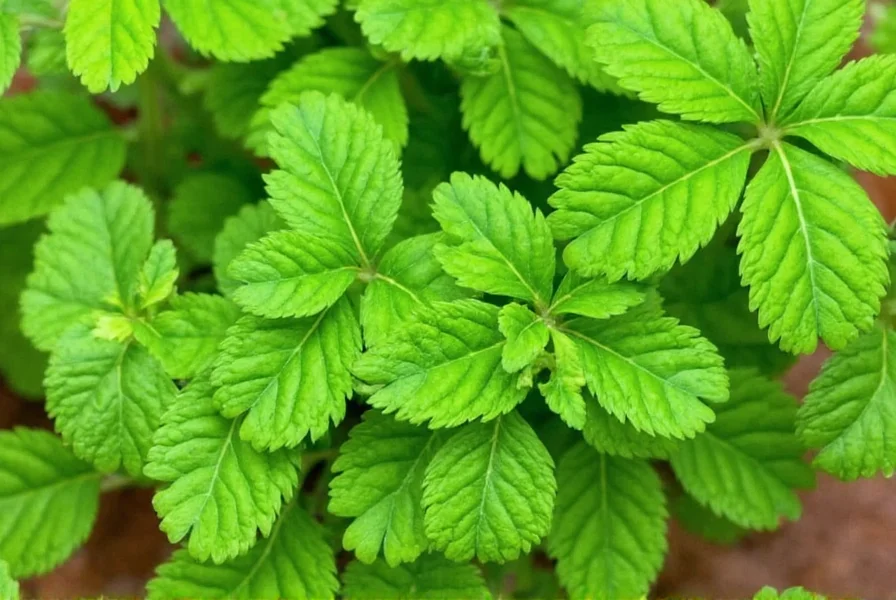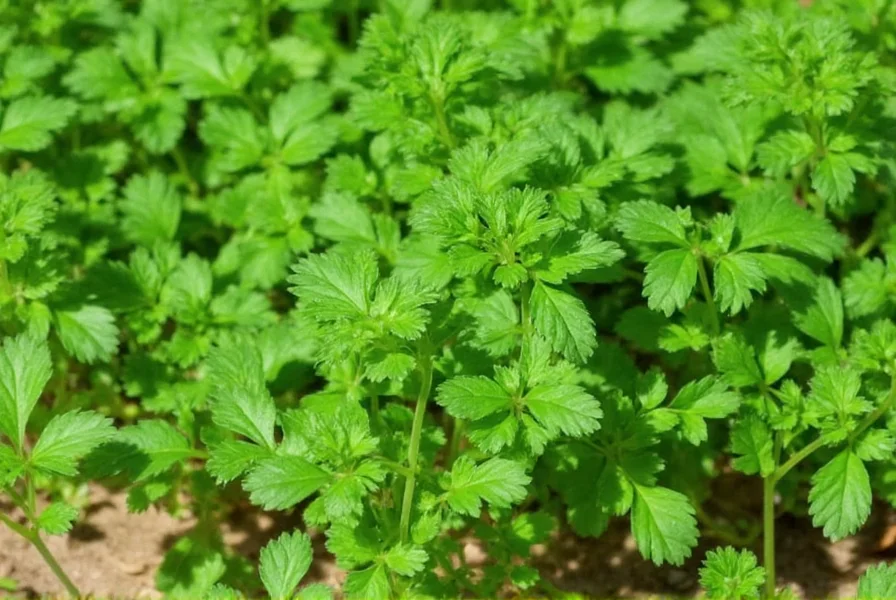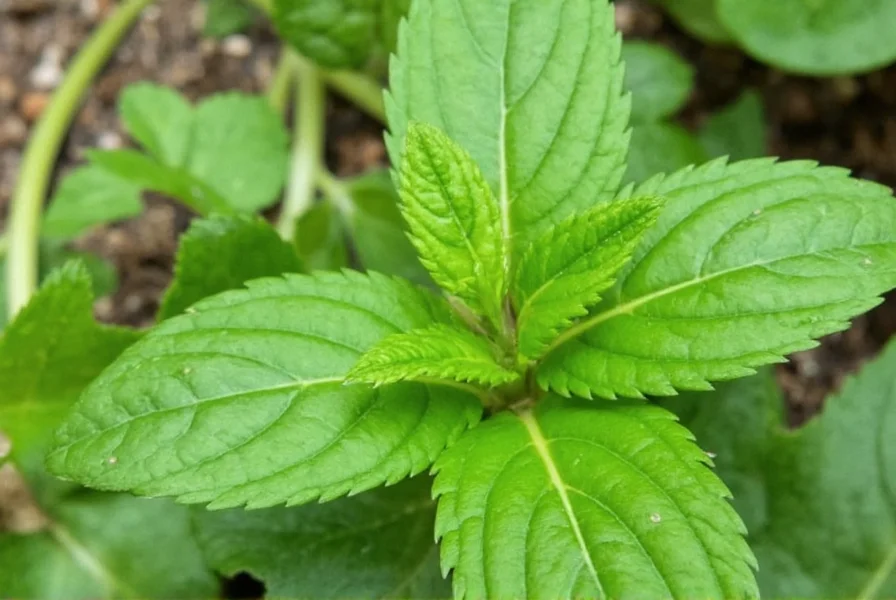The coriander plant (Coriandrum sativum) is an annual herb in the Apiaceae family, valued for both its fresh leaves (commonly called cilantro) and dried seeds. Native to regions spanning from southern Europe to western Asia, this versatile plant grows to 30-60 cm tall with slender stems, triangular leaves, and small white or pink flowers that develop into the familiar round coriander seeds.
Understanding how to successfully cultivate and utilize the coriander plant can transform your gardening and culinary experiences. This comprehensive guide provides evidence-based information for both novice and experienced gardeners seeking to grow this versatile herb.
Botanical Characteristics of Coriander
Coriandrum sativum belongs to the Apiaceae family, which includes carrots, parsley, and celery. The plant features distinct characteristics at different growth stages:
| Growth Stage | Leaf Characteristics | Height | Flowering Time |
|---|---|---|---|
| Seedling (2-3 weeks) | Small, rounded leaves | 5-10 cm | N/A |
| Vegetative (4-6 weeks) | Lobed, triangular leaves | 20-40 cm | N/A |
| Flowering (7-8 weeks) | Finely divided leaves | 40-60 cm | White/pink umbels |
| Seed Production (9-12 weeks) | Drying foliage | 50-70 cm | Seeds forming |
Optimal Growing Conditions for Coriander Plants
Successful coriander cultivation depends on creating the right environment. Unlike many herbs, coriander has specific requirements that differ from its mature seed stage to its leaf production phase.
Climate and Temperature Requirements
Coriander thrives in cool to moderate temperatures between 50-85°F (10-29°C). The plant bolts (goes to seed) quickly when temperatures exceed 85°F, which many gardeners find frustrating when trying to maintain leaf production. For continuous leaf harvest, plant coriander in early spring or late summer when temperatures are more favorable.

Soil Preparation for Healthy Coriander Growth
Well-draining soil is essential for preventing root rot in coriander plants. The ideal soil composition includes:
- pH level: 6.2-6.8 (slightly acidic to neutral)
- Amend heavy clay soils with compost or perlite
- Add organic matter to sandy soils to improve moisture retention
- Avoid nitrogen-rich fertilizers which promote excessive leaf growth at the expense of flavor
Step-by-Step Guide to Growing Coriander
Planting Coriander Seeds Successfully
Direct sowing works best for coriander as the plant develops a taproot that doesn't transplant well. Follow these steps for optimal germination:
- Prepare soil by loosening to 6-8 inch depth and removing debris
- Sow seeds ¼ inch deep, spacing 2-3 inches apart
- Water gently but thoroughly after planting
- Maintain consistent moisture until germination (7-10 days)
- Thin seedlings to 6-8 inches apart once true leaves appear
Growing Coriander in Containers
Container gardening offers excellent control over growing conditions for coriander plants. When growing coriander in pots:
- Choose containers at least 8-10 inches deep to accommodate taproots
- Use high-quality potting mix with good drainage
- Place containers where they'll receive 4-6 hours of morning sun
- Water when top inch of soil feels dry
- Fertilize monthly with balanced organic fertilizer
Harvesting Techniques for Maximum Flavor
Proper harvesting significantly impacts the flavor and longevity of your coriander plants. Understanding when and how to harvest both leaves and seeds ensures optimal results.
Harvesting Coriander Leaves
For the best flavor, harvest coriander leaves in the morning when essential oils are most concentrated. Follow these guidelines:
- Begin harvesting when plants reach 6 inches tall
- Cut outer leaves first, allowing inner growth to continue
- Never remove more than one-third of the plant at once
- Regular harvesting encourages bushier growth
- Leaves taste strongest before flowering begins
Collecting and Processing Coriander Seeds
Coriander seeds develop after the plant flowers. For proper seed collection:
- Allow flowers to mature into seed heads (turning from green to brown)
- Cut seed heads when ⅔ have turned brown but before they dry completely
- Place in paper bags to finish drying indoors
- Once fully dry, rub seed heads to release seeds
- Store seeds in airtight containers away from light
Common Challenges in Coriander Cultivation
Even experienced gardeners encounter issues with coriander plants. Understanding these problems helps maintain healthy growth.
Preventing Premature Bolting
Bolting (early flowering) is the most common frustration for coriander growers. To delay bolting:
- Plant successive crops every 2-3 weeks for continuous harvest
- Provide partial shade during hottest parts of the day
- Maintain consistent soil moisture (avoid drought stress)
- Choose slow-bolting varieties like 'Santo' or 'Calypso'
- Apply mulch to keep soil temperatures cooler
Pest and Disease Management
Coriander generally resists most pests but can encounter these issues:
| Issue | Symptoms | Organic Solution |
|---|---|---|
| Aphids | Curled leaves, sticky residue | Strong water spray, insecticidal soap |
| Spider Mites | Yellow stippling, fine webbing | Neem oil, increase humidity |
| Leaf Spot | Brown spots with yellow halos | Remove affected leaves, improve air circulation |
| Root Rot | Wilting, yellowing, mushy roots | Improve drainage, avoid overwatering |
Culinary and Medicinal Applications
The coriander plant offers versatile uses beyond basic cooking. Both leaves and seeds provide distinct flavor profiles and potential health benefits.
Culinary Uses by Plant Part
Fresh coriander leaves (cilantro) and mature seeds serve different culinary purposes:
- Leaves: Best used fresh in salsas, guacamole, chutneys, and as garnish for soups and curries
- Stems: Finely chopped stems add intense flavor to stocks and braises
- Seeds: Whole or ground seeds feature in spice blends, pickling recipes, and baked goods
- Roots: In Southeast Asian cuisine, roots are used in curry pastes for deep flavor
Evidence-Based Health Benefits
Research suggests several potential health benefits associated with coriander consumption:
- Antioxidant properties from polyphenols in both leaves and seeds
- Digestive support through stimulation of enzyme production
- Potential blood sugar regulation effects noted in preliminary studies
- Anti-inflammatory compounds that may support heart health
Coriander vs. Cilantro: Terminology Explained
The terms "coriander" and "cilantro" cause frequent confusion. Understanding regional terminology helps avoid misunderstandings:
- In the UK, Australia, and much of Europe, "coriander" refers to both the plant and seeds
- In the US, "cilantro" specifically means the fresh leaves/stems, while "coriander" refers to the seeds
- Botanically, it's the same plant (Coriandrum sativum) at different growth stages
- The word "cilantro" comes from Spanish, while "coriander" has Arabic origins

Preserving Your Coriander Harvest
Extending the shelf life of your coriander harvest ensures you can enjoy its flavor year-round. Different preservation methods work best for leaves versus seeds.
Leaf Preservation Techniques
Fresh coriander leaves lose flavor quickly, but these methods help maintain quality:
- Refrigeration: Store stems in water like cut flowers, covered with a plastic bag
- Freezing: Chop leaves and freeze in ice cube trays with water or oil
- Drying: Hang small bunches upside down in a dark, dry place (leaves lose some flavor)
- Pesto: Blend with oil, garlic, and nuts for freezer storage
Seed Storage Best Practices
Properly stored coriander seeds maintain potency for up to 3 years:
- Dry seeds completely before storage
- Store in airtight glass containers away from light
- Keep in cool location (below 70°F/21°C)
- Grind seeds just before use for maximum flavor release
- Check periodically for moisture or mold
Frequently Asked Questions
How long does it take for coriander plants to grow from seed to harvest?
Coriander plants typically germinate in 7-10 days and reach harvestable size for leaves in 3-4 weeks. The complete growth cycle from seed to mature seeds takes 9-12 weeks, depending on growing conditions and variety.
Why does my coriander plant keep dying after a few weeks?
Coriander plants often die prematurely due to bolting (going to seed) triggered by heat, inconsistent watering, or insufficient soil depth. They prefer cooler temperatures and consistent moisture. Growing successive crops every 2-3 weeks ensures continuous harvest.
Can I grow coriander indoors year-round?
Yes, coriander can be grown indoors successfully with proper conditions. Use a container at least 8 inches deep, place in a south-facing window with 4-6 hours of sunlight, maintain temperatures between 60-75°F, and water when the top inch of soil feels dry.
What's the difference between coriander and cilantro?
Coriander and cilantro come from the same plant (Coriandrum sativum). In the US, 'cilantro' refers to the fresh leaves and stems, while 'coriander' refers to the dried seeds. In most other English-speaking countries, the entire plant is called coriander.
How do I prevent my coriander from bolting too quickly?
To prevent premature bolting: plant successive crops every 2-3 weeks, provide partial shade during hottest parts of day, maintain consistent soil moisture, choose slow-bolting varieties like 'Santo', and apply mulch to keep soil temperatures cooler.











 浙公网安备
33010002000092号
浙公网安备
33010002000092号 浙B2-20120091-4
浙B2-20120091-4